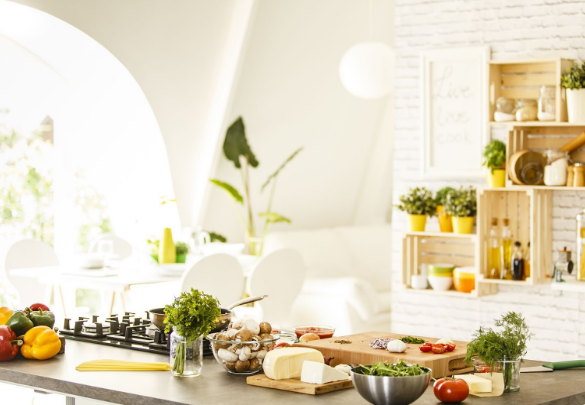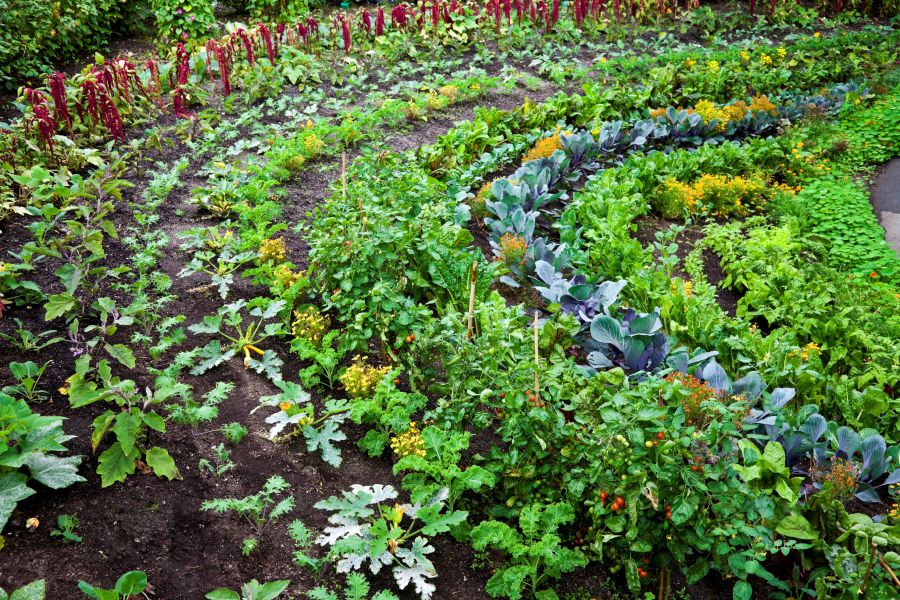Fresh and convenient, growing herbs and citrus plants in your kitchen is easy with the right conditions. Herbs are small and perfect for keeping on counters or tables. Citrus plants make a great accent. In addition to being great decorative items, herbs and citrus will add zest and flavor to your cooking. Feed your houseplants regularly with Espoma’s Indoor liquid fertilizer to help keep them healthy and strong.

Grow herbs and citrus plants indoors year-round for your favorite foods.
Basil
Basil is a versatile herb that can be added to just about anything. It has anti-inflammatory and antiviral properties and can help prevent osteoarthritis. Chopped basil can be sprinkled in omelets, on baked or grilled veggies, in soups, on meats or fresh into salads.
Meyer Lemon
Lemons can be used to flavor many sweet and savory dishes. Lemon is the perfect addition to fish and poultry. Sauces and foods containing lemon juice help in the digestion of fried foods. Lemons are also used in baked goods and desserts to provide a light, fresh flavor. Lemons also make a beautiful garnish.
Rosemary
Rosemary is one of the most aromatic and pungent of all the herbs. Its needlelike leaves have pronounced lemon-pine flavor that pairs well with roasted lamb, garlic, and olive oil.
Key Lime
Key limes are prized for their high juice content and intense aroma. Not only does the flavorful citrus make incredible pies, but it’s also great for cookies, cupcakes, cocktails, and more.
Oregano
Fresh oregano has a robust, woodsy flavor that makes it one of the most popular herbs in the kitchen. Oregano compliments a variety of meats and vegetables with strong flavours such as those containing zucchini, broccoli, cauliflower, aubergine and lamb. It is also fantastic in salads, pizza and tomato sauces.
Some basics for growing herbs indoors:
Light
- When choosing a location for plants stick to a sunny windowsill of a south or west-facing window for the best sun exposure. South-facing windows provide the most sunlight, with light streaming through them all day. Windows facing west are a good alternative. You can also add Grow lights if necessary. Gertens has many choices!
Temperature
- Penn State Extension recommends keeping herb plants in rooms having an air temperature between 65-70℉ during the day, and 55-60℉ at night.
- Avoid putting containers in a spot where they are exposed to cold drafts from a window or door or register vents that blow hot air in the winter. This drastic change in temperature can cause your herbs stress, affecting their flavor.
Watering
- For most herbs, water when the top 1 inch of potting soil is dry. Water until excess starts to drain out the bottom of the container. Empty the saucer.
Harvesting
- Herbs respond well to frequent harvesting; regularly removing foliage from plants triggers new growth, encouraging full, bushy plants. Never remove more than ⅔ of the plant at one time.
For growing citrus indoors: The University of Minnesota Extension offers an excellent “how to” on Growing Citrus Indoors
The experts at Gertens are always available to answer your questions!


